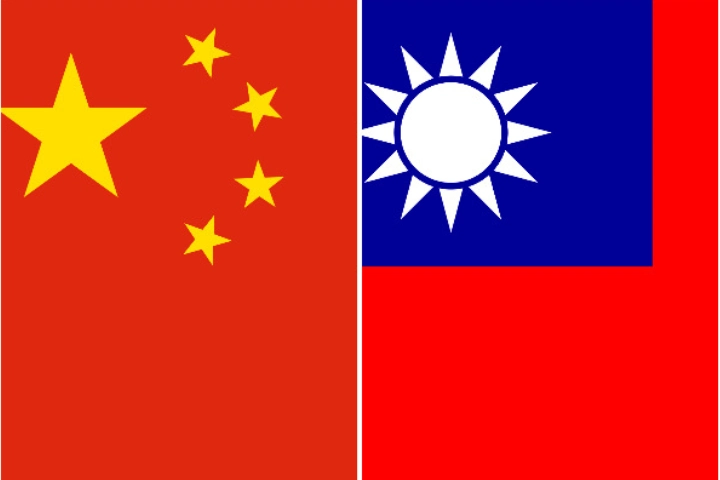The Civil Aviation Administration of China recently announced the initiation of new air routes to the cities of Xiamen and Fuzhou, which are positioned in close proximity to the Taiwan-controlled islands of Kinmen and Matsu, Taiwan News reported.
This development, disclosed on Friday, April 19, is connected to the contentious M503 flight route that skirts the sensitive median line in the Taiwan Strait, an area of longstanding unofficial demarcation between Taiwan and China, traditionally avoided by combat aircraft from both sides.
Further, Mainland Affairs Council (MAC) spokesperson Chien Chih-hung said in February that China’s “unilateral activation” of the W122 and W123 routes would have a “great impact on the flight safety of Kinmen and Matsu,” Taiwan News reported citing Rti.
Prior to this, Chien stated that flights only operated in a westward direction, allowing for coordination and ensuring flight route safety. Chien said the eastbound flights would “affect Taiwan’s existing air routes, raising great concerns about flight safety risks.”
According to Taiwan News, Damien Symon, an open-source intelligence researcher, uploaded a map on Feb. 1 showing the proximity of the modified route to the median line and Taiwan’s FIR.
Symon emphasised that the altered routes come close to the Air Force’s military patrol zones, which are meant to serve as strategic buffer zones against People’s Liberation Army aircraft.
Regarding the announcement, the CAAC said eastbound W122 and W123 routes will connect to the M503 flight path, adding that on May 16, the arrival and departure airspace over the Fuzhou Changle International Airport will be “further optimised and adjusted,” as per Taiwan News.
Later the administration claimed this “optimisation of airspace in Fujian province” and adjustments to the operation of the M503 route and its connecting flight paths will be conducive to meeting the “development needs” of aviation transportation between the Yangtze River Delta and the Guangdong-Hong Kong-Macao Greater Bay Area, as well as southeastern coastal regions.
The purported aim of these adjustments is to streamline operational conditions, prioritise flight safety, bolster readiness for the thunderstorm season, enhance flight punctuality, and cater to passenger travel needs.
The CAAC announced in January that effective February 1, the flight “offset measure” for route M503 operating from north to south would be cancelled, meaning Chinese flights flying southbound over the Taiwan Strait would come closer to the median line and Taiwan’s Flight Information Region (FIR).
The CAAC also planned to enable eastbound W122 and W123 routes to “improve the efficiency of airspace operations.” These routes link route M503 with Fuzhou and Xiamen.
Meanwhile, this month, Taiwan has tracked Chinese military aircraft 136 times and naval vessels 98 times.
Since September 2020, China has increased its use of grey zone tactics by incrementally increasing the number of military aircraft and naval ships operating around Taiwan.
Grey zone tactics are defined as “an effort or series of efforts beyond steady-state deterrence and assurance that attempts to achieve one’s security objectives without resorting to direct and sizable use of force.”
Subsequently, tensions are at its peak in Taiwan and China’s dispute over the waters around Kinmen
China is repeatedly trespassing in the waters surrounding Taiwan-held Kinmen,Taiwna News reported in March
The boundaries were set for the Kinmen island by Taiwan’s Ministry of National Defense in 1992, as per Taiwan news reports in February.
Although Beijing does not recognise Taiwan’s territorial claims (since it claims Taiwan as its own territory), Taiwan’s Mainland Affairs Council (MAC) argues that China has tacitly abided by the boundaries, such that denying them now constitutes a change of the status quo.
According to Taiwan’s Coast Guard Administration, the term “prohibited waters” refers to territorial waters, which extend 12 nautical miles around Taiwan proper and varying distances around Taiwan’s outlying islands.
“Restricted waters” refers to a contiguous zone, which states use to bolster their law enforcement capacity in the area just outside their territorial seas. This contiguous zone extends 24 nautical miles around Taiwan proper, and varying distances around Taiwan’s outlying islands.
Taiwan News disclosed in their article published in February that Taiwan authorises its Coast Guard to search and seize foreign vessels entering the country’s prohibited waters.
Under existing protocols, the Coast Guard is authorised to search and seize foreign boats that continue to operate in Taiwan’s restricted waters after being warned twice to leave the area.




















